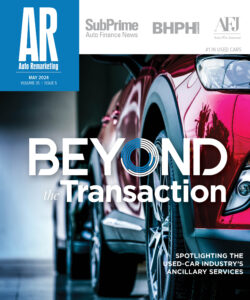ALG Delves into Resale Implications of Mercury Discontinuation
SANTA BARBARA, Calif. — Bearing in mind Ford's plans to end the Mercury brand later this year, ALG recently shared data in its latest Residual Value Report that sheds some light on what may happen to the discontinued brand's value retention.
When a brand is cut from an automaker, the three subsequent years usually show the brand losing between three points and five points in 36-month retention, according to ALG. (Officials noted this is "relative to the industry and parent company.")
And most of that — approximately two to three points — is lost in the first year.
Plymouth saw its retention values drop 6.6 points during the three years subsequent to its November 2009 discontinuation announcement. Oldsmobile's decline was about 2.5 points.
"Additionally, current macroeconomic indicators are significantly more unfavorable for Mercury than when Oldsmobile was eliminated, with total industry sales in the 10-11 million range as opposed to 16-17 million," officials noted.
"On the positive side, Mercury is currently selling fewer than 90,000 annual units, which is less than both Plymouth and Oldsmobile prior to their phase out," they added.
"As of the September/October edition, ALG will include a 2.5-3-point negative adjustment to the residual outlook for the overall Mercury brand consistent with the historic declines seen in other retired brands, but taking account of the positive factor of low volume," analysts continued.
Impact on Mercury's Used Brand Value
Continuing on, ALG looked at used statistical brand values for Mercury, as well as Pontiac and Saturn — two of the brands cut by General Motors as part of its bankruptcy process.
"ALG's used statistical brand value measures the inherent value held within a nameplate by isolating the impact of the brand alone on actual resale prices; it does this by holding equipment, mileage, performance, and various other metrics constant," officials explained.
Pontiac's brand value has fallen about 1.6 percent following GM revealing its discontinuation last year, while Saturn's value has dipped about 1.3 percent.
As for Mercury, even though it had seen increases in its used brand value in the last two years, sales and demand have fallen in recent years thanks to its models not really being distinguishable from the comparable, competing counterparts at Ford as well as "unexplained price discrepancies," ALG noted.
Officials indicated Mercury is 12 percent off the industry average for used-brand value. Furthermore, Mercury's used-brand value will likely drop about 5.5 more percentage points in the next three years, they noted.
"ALG regards brand value as a significant driver of residual values; hence, this forecasted decline is a significant factor in determining the (approximately) 2.5-3 points of forecasted deflation that will be applied to the brand over the 36-month term," ALG stated
Where is Used Supply Headed?
Moving on, ALG also looked at future trends in the new-vehicle market and how this may affect the used side of the industry.
In April, the new-vehicle sales forecast for full-year 2010 was at 11.6 million units, up from the 10.9 million total that was projected in April 2009 for full-year 2010.
Moreover, the forecast in April 2010 points to a new-vehicle market of 15.9 million units for full-year 2013. This is up from the 15.3 million units projected back in April 2009.
"New sales are expected to recover to 2007 levels within the next four years. In the long run, this recovery will increase used supply for the overall industry, which, in turn, will put negative pressure on resale values," officials noted.
One vehicle type that will see a significant effect from this likely surge in the coming years is the CUV category.
"The CUV segment, in particular, will be impacted by the expected growth from now until 2014. Prior to the fuel price highs and economic trouble in 2008, the CUV segment had shown an average of about 25-percent (year-over-year) growth from 2002 to 2007," they added. "While recovery on new vehicle sales is a positive step forward, the used supply impact will put pressure on residual values."
Moving on, ALG noted that the dearth in new sales last year is likely to push used supply down for "the next few years." Demand being constant, lower used supply means higher resale values, and the inverse of that is true, as well.
There was a 16-percent drop in resale values from 2006 to 2009. However, there has been a 24-percent hike between last year and this year.
"The decline in used supply will boost residuals an additional 3 percent by 2013. Used supply is expected to pick back up in 2015 as a result of the forecasted growth in new market sales, lessening the positive impact on residual values," officials concluded.

 View The Latest Edition
View The Latest Edition

